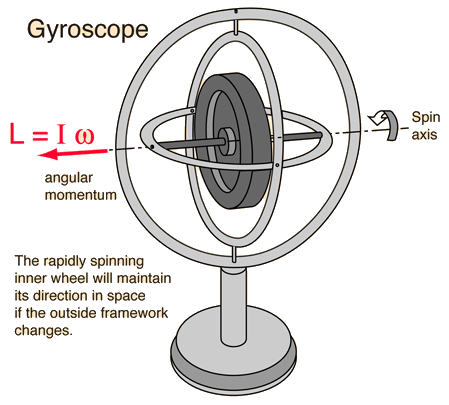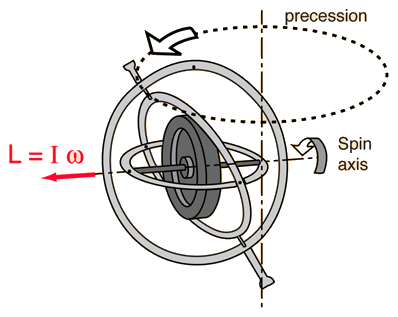Gyroscope Discussion
The classic image of a gyroscope is a fairly massive rotor suspended in light supporting rings called gimbals which have nearly frictionless bearings and which isolate the central rotor from outside torques. At high speeds, the gyroscope exhibits extraordinary stability of balance and maintains the direction of the high speed rotation axis of its central rotor. The implication of the conservation of angular momentum is that the angular momentum of the rotor maintains not only its magnitude, but also its direction in space in the absence of external torque. The classic type gyroscope finds application in gyro-compasses, but there are many more common examples of gyroscopic motion and stability. Spinning tops, the wheels of bicycles and motorcycles, the spin of the Earth in space, even the behavior of a boomerang are examples of gyroscopic motion.
|
Index
Vector rotation examples |

